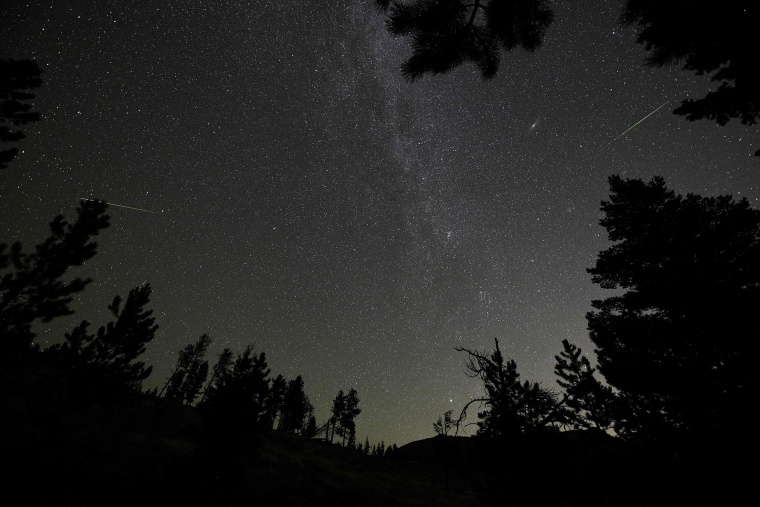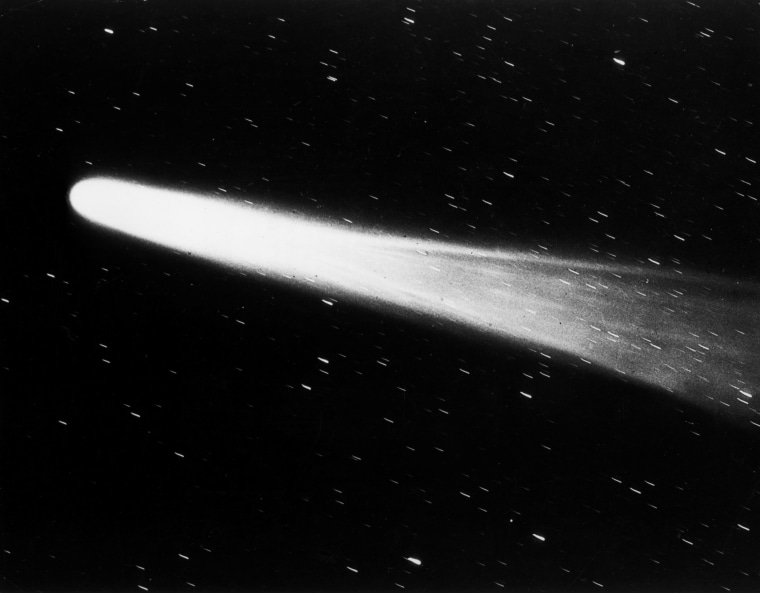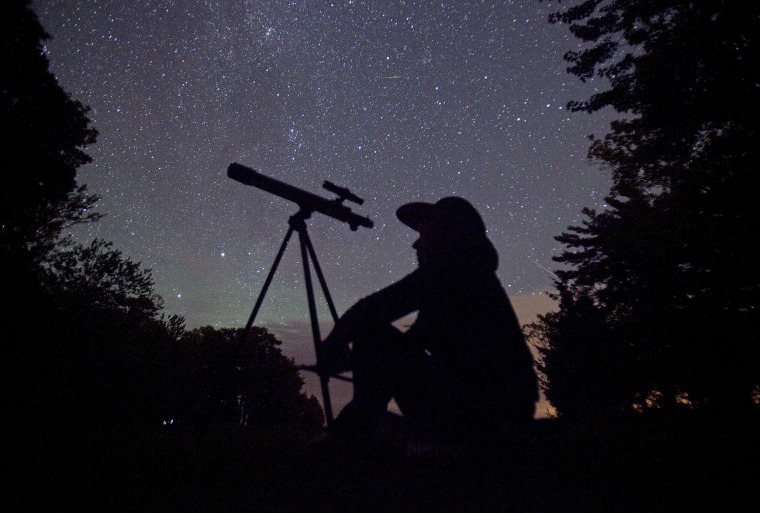The Lyrid meteor shower may be over, but your chance to see shooting stars this spring isn’t. The Eta Aquarids meteors arrived on April 19 and will be visible until May 28, with the peak occurring in the early morning hours of May 6.
“The visibility this year will be good,” Bill Cooke, a meteor expert at NASA’s Marshall Space Flight Center in Huntsville, Alabama, told NBC News MACH in an email. “There will be no moonlight to wash out the fainter meteors."
While people in the Southern Hemisphere will have the best chance of seeing the Eta Aquarids, the meteors will also put on a show for those in the United States and elsewhere in the Northern Hemisphere.
“All you need is a clear, dark sky,” Cooke said, adding that — weather permitting — observers can expect to see up to 40 meteors per hour during the peak.

The Eta Aquarids appear to come from the direction of a bright star called Eta Aquarii in the constellation Aquarius. But like all meteors, they’re simply fast-moving bits of dust that create brilliant streaks of light as they strike Earth’s atmosphere and burn up.
The dust particles come from the tail of a comet — in this case Halley’s, which approaches Earth every 75 years on its long elliptical orbit around the sun. Halley’s Comet was known in ancient times but got its current name after 18th century British astronomer Edmond Halley noted the comet’s periodic returns.

Halley’s comet last came our way in 1986 and will make its next appearance in 2061. But even though the comet itself returns only periodically, Earth crosses its path every year to produce the Eta Aquarids.
No telescopes or other viewing equipment is needed to view meteor showers. Just find a dark place with an unobstructed view of the sky, and look up.
WANT MORE STORIES ABOUT SPACE?
- China reveals plans to build moon base
- Black hole picture could unlock new era in astronomy
- The universe is expanding faster then we thought, and no one knows why
SIGN UP FOR THE MACH NEWSLETTER AND FOLLOW NBC NEWS MACH ON TWITTER, FACEBOOK, AND INSTAGRAM.
